
Five Ways to Play Games With Interval Flashcards In Your Piano Lessons
If you’ve been following along on our Instagram, you know that we have had a busy summer releasing more piano books to the Cascade Method piano book collection, as well as creating fun, interactive piano games!
It’s no secret that this school year is going to look different in every aspect. All my students are currently learning virtually and we’re still unsure when we’ll be able to incorporate in-person lessons again. I spent the summer making books and getting crafty because I want my students to still enjoy learning, even if it’s a little different from their previous years!
I know this transition to teaching virtually can be overwhelming but with the right resources, you can teach effectively AND still have fun!
We are now selling interval flashcards and downloadable piano games that you can use with your students—even while teaching online! Here are five different ways I play interval flashcards with my students to inspire you for your next piano lesson!
5 Ways to Reinforce Intervals Using Cascade Method Interval Flashcards!
The Cascade Method Interval Flashcard Packet contains 31 pages packed with 252 harmonic and melodic (ascending and descending) intervals ranging from Unisons to Fifths.
Colored and Black and White versions are available for purchase!
 Practicing Flashcards!
Practicing Flashcards!
The first and most obvious way to use these cards is as regular interval flashcards! This is the most simple game you can incorporate in your lessons and can definitely work online, in-person, or in a group setting!
Simply show your student(s) a card and have them identify it. You can either try to get through the whole deck or set a goal to get “x amount” in a row right! It’ll feel less like learning flashcards and more like a fun challenge when you set a goal!
For a group setting, you can make it a race or set up teams! First one who guesses the note, keeps the card. Then, x amount of cards wins!
 Interval War!
Interval War!
Do you remember the card game, War? Interval War follows the same rules, just uses a different styled deck! ? The interval flashcards vary from unisons to fifths. There are also harmonic and melodic intervals but for this game, you only pay attention to which player has the highest interval. (However, you still want your students to be able to identify whether the interval is harmonic or melodic for learning purposes!)
How to Play War: Each player picks up a card at the same time and identifies their card. For example, you might have a half note while your student has a quarter note. The player with the “higher” card or the card that’s worth more takes both cards to build their stack! (In this case, the half note would win the cards!)
If you happen to pick up the same card, it’s time for war! In the traditional card game, each player turns up one card face down and one card face up. The player with the higher cards takes BOTH piles! Whoever ends up with all the cards at the end is the winner!
Personally, I like playing the “war” portion of this game a little different. This makes the game go a little faster since piano lessons are timed. ? When it’s time for war, we take three cards and put them face down and then turn the fourth card up. Whoever has the highest interval on the fourth card wins ALL cards!
Don’t forget: It doesn’t matter if a student has a “melodic second” and you have a “harmonic second,” that still means war!
Want to make it even more fun? Download my FREE Joker and wild cards!
These free cards are optional to use, but it will surely keep it interesting and make the game go faster if you’re short on time!
- Joker cards: The player takes all cards
- Wild card: Swap cards with another player
- Wild card: Take 10 cards from another player
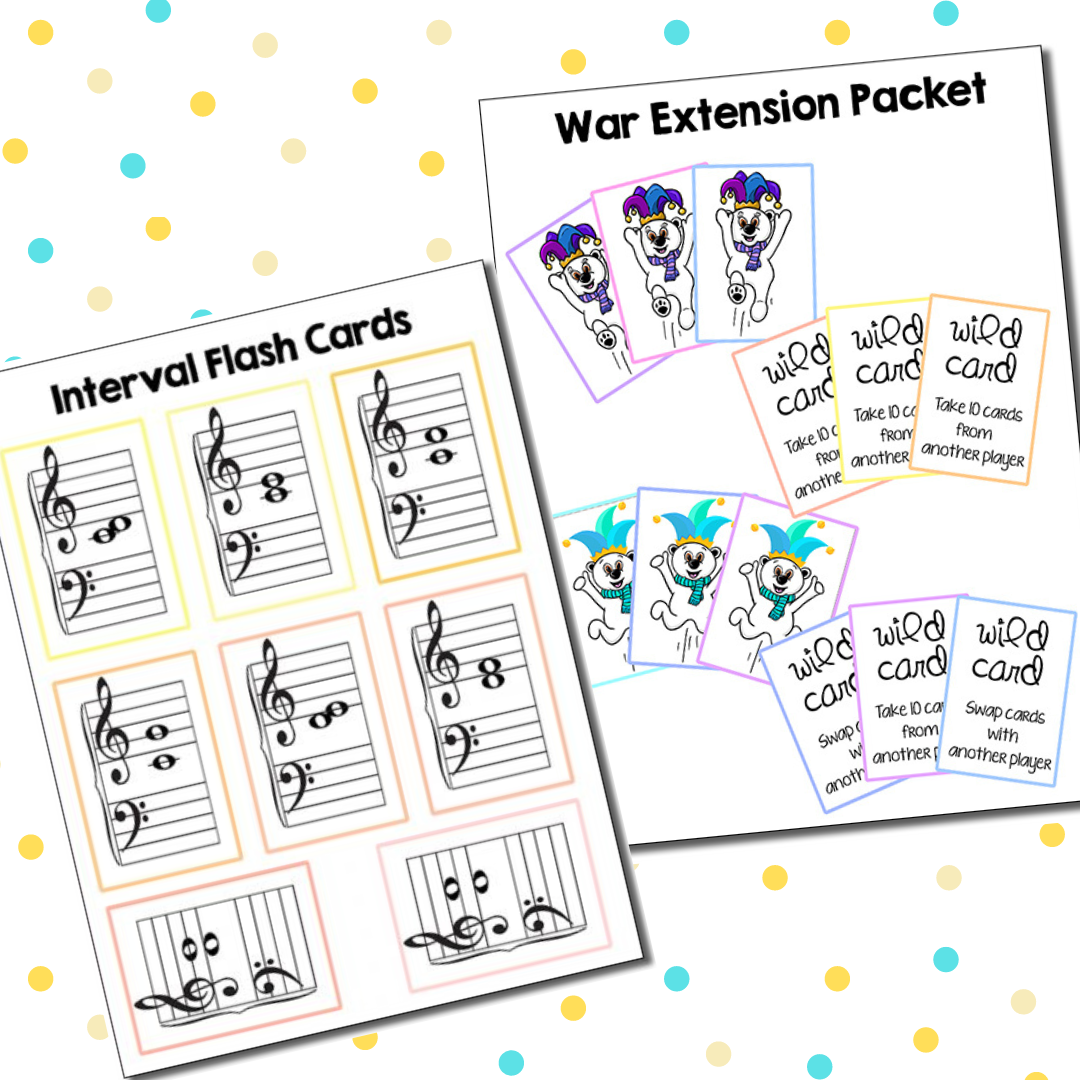
 Interval Go Fish!
Interval Go Fish!
You guessed it! Interval Go Fish uses the same rules as the traditional Go Fish with a little bit of a spin and flexibility. ? When playing with intervals – students will ask another player for an interval from a unison to a fifth. In this game, the harmonic and melodic intervals don’t make a difference in rank.
You can play super loosely, where a student just asks for a “second” and if the other player has ANY type of second, they have to hand it over. If you want it to be more challenging, players can ask for a “second starting on C” (doesn’t matter which C), and if the other player has a second starting on a C, they have to hand it over.
If played with ALL the cards in the deck, there’s a good chance of the other player having that card. If you’re limited on time and only want to play with part of the deck, it’s probably best to play it very loosely.
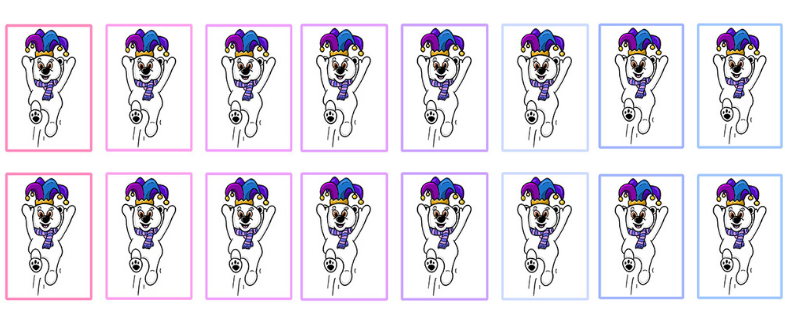
How to Play Go Fish: Deal the cards to all players. For two or three players, deal seven cards each. For more than three players, deal five cards each. The remaining deck of cards is placed face down in the center of the players.
Each player will take a turn asking another player for a particular card. For example, you might ask your student if they have any half notes. If your student has any half notes, they must give you all of them. If they don’t, they say “Go Fish!” You then would draw from the deck. If the player doesn’t Go Fish, they get another turn.
When a player gets all four “suits” of the same rank (or in this case, four half notes), then they can lay down those cards face up.
Go Fish is over when one player runs out of cards or there are no more cards in the center. The winner is then determined by who has the most piles or “suits of cards” in front of them!
This game is about teaching the student to simply realize the distance between two notes. Any type of pair will do, as in any unison, second, third, fourth or fifth. If you want the game to be harder or take it one step further, there are melodic and harmonic intervals. You can allow a mix and match, or to make it harder, you can only use similar harmonic intervals and melodic intervals. When students have a pair of 2 matching intervals (not identical, but both “2nds” or “thirds”), that could be a match.
 Chutes and Ladders!
Chutes and Ladders!
Ah, the classic game of Chutes and Ladders! I had SO MUCH FUN creating this PDF print-out! This game is going to be one that your students LOVE!!! It’s really straightforward but this game can be played with much more than just interval flashcards!
How to Play Chute and Ladders With Interval Flashcards
Use the pile of interval flashcards to know how many squares to move forward.
If a player’s card shows the interval is a second, the student will move forward twice. First player to make it to square 42 wins! You can each play with your own board in front of you or pull the digital verision up online and mark it as you go through a shared Google doc!
More Fun Games For Chutes and Ladders:
You can purchase large foam dice at your local dollar store and reinforce piano finger numbers while playing chutes and ladders! You can also use the rhythm cards to play Chutes and Ladders.
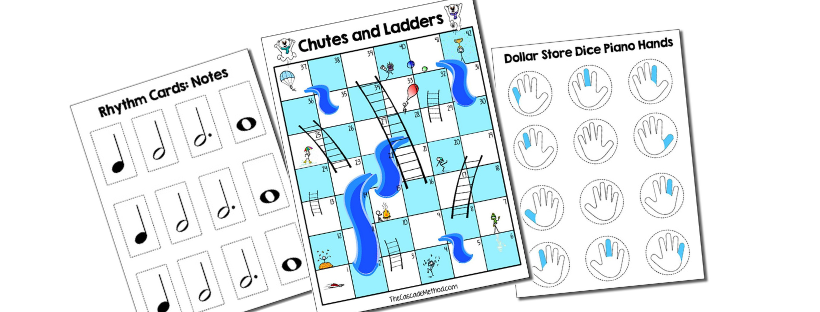
 Interval Style Uno!
Interval Style Uno!
I think we’re all pretty familiar with how to play Uno! but if you need a refresher, click here to read the rules!
This is definitely an in-person game and bases a lot on colors, so be sure to consider that when you think of printing this one out! You’ll need the Uno Extension Packet paired with your Colored Interval Flashcard Deck!
The same rules apply as the original game of Uno, but you can always play more loosely if younger/beginner students want to match a color instead of an interval.
How to Play Interval Styled Uno:
When a student puts down any type of “third,” another student can put any color as long as it’s also a third. It does not have to be an identical third (as in C to E). If a student puts down C to E, another student can put down G to B, because both are thirds. Melodic and harmonic are both fair game as well.
Piano Games that Help Students Learn!
The purpose of all these games is to creatively teach students the key fundamentals of playing the piano. When you become a Cascade Method member, you are given FREE access to all games, activities, and printouts!
We also host a Live Workshop each month for Cascade Method members in our private Facebook group where I go over exactly what I do regarding methods, games, and much more!

Are you ready to join the fun?
Become a Cascade Method Certified Teacher!
Check out all the available Cascade Method Piano Games and Activities!
Check out all the Cascade Method FREE Resources!
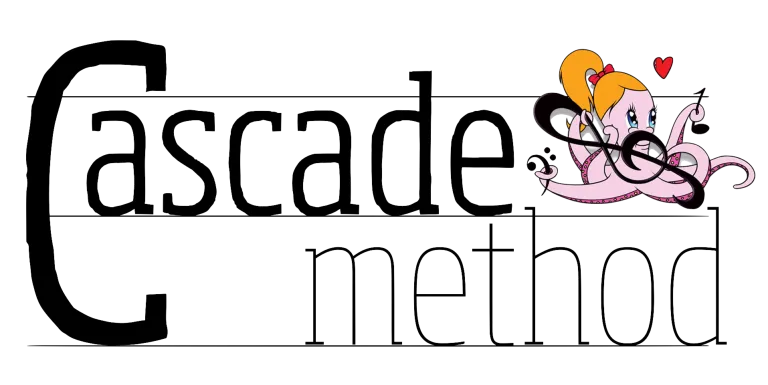
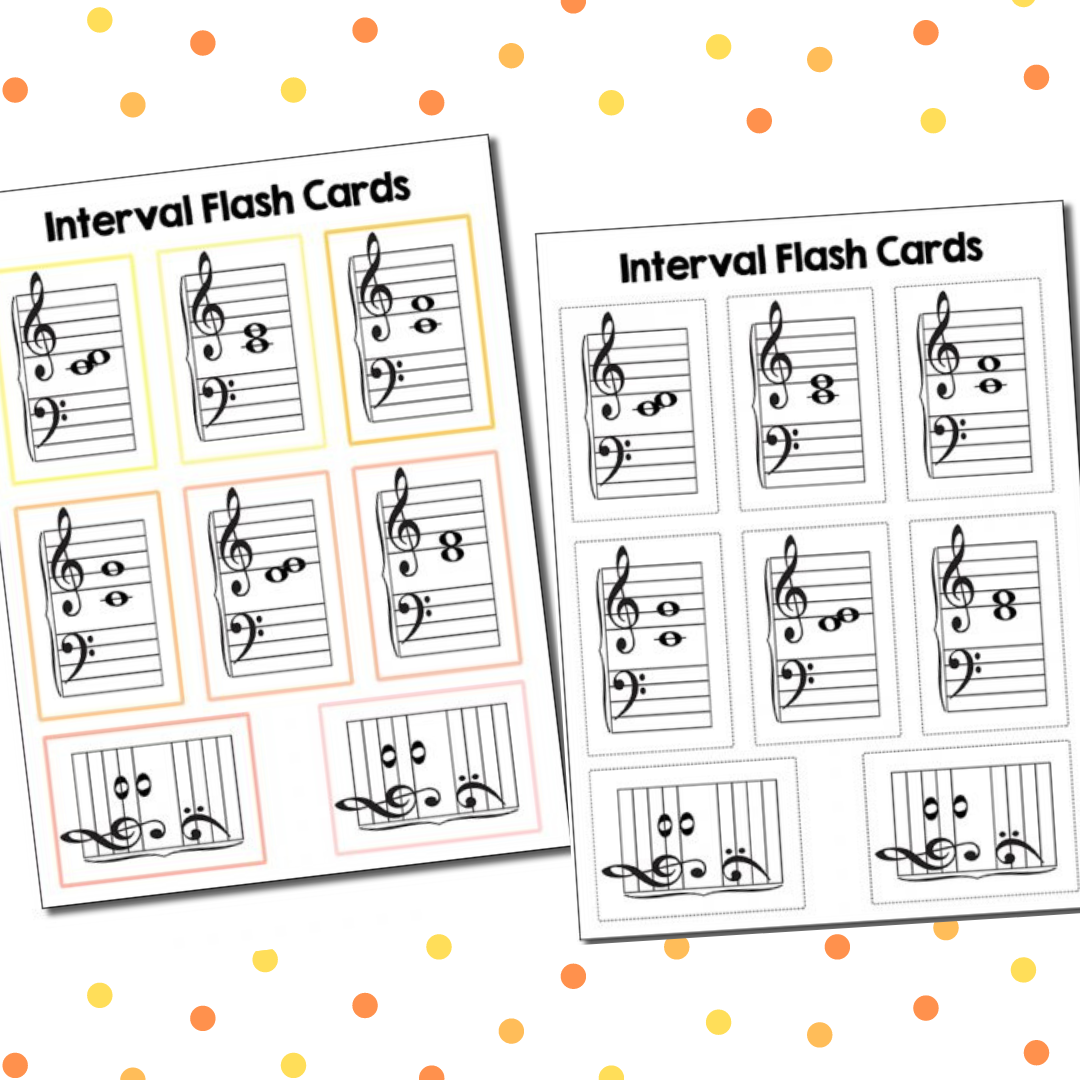
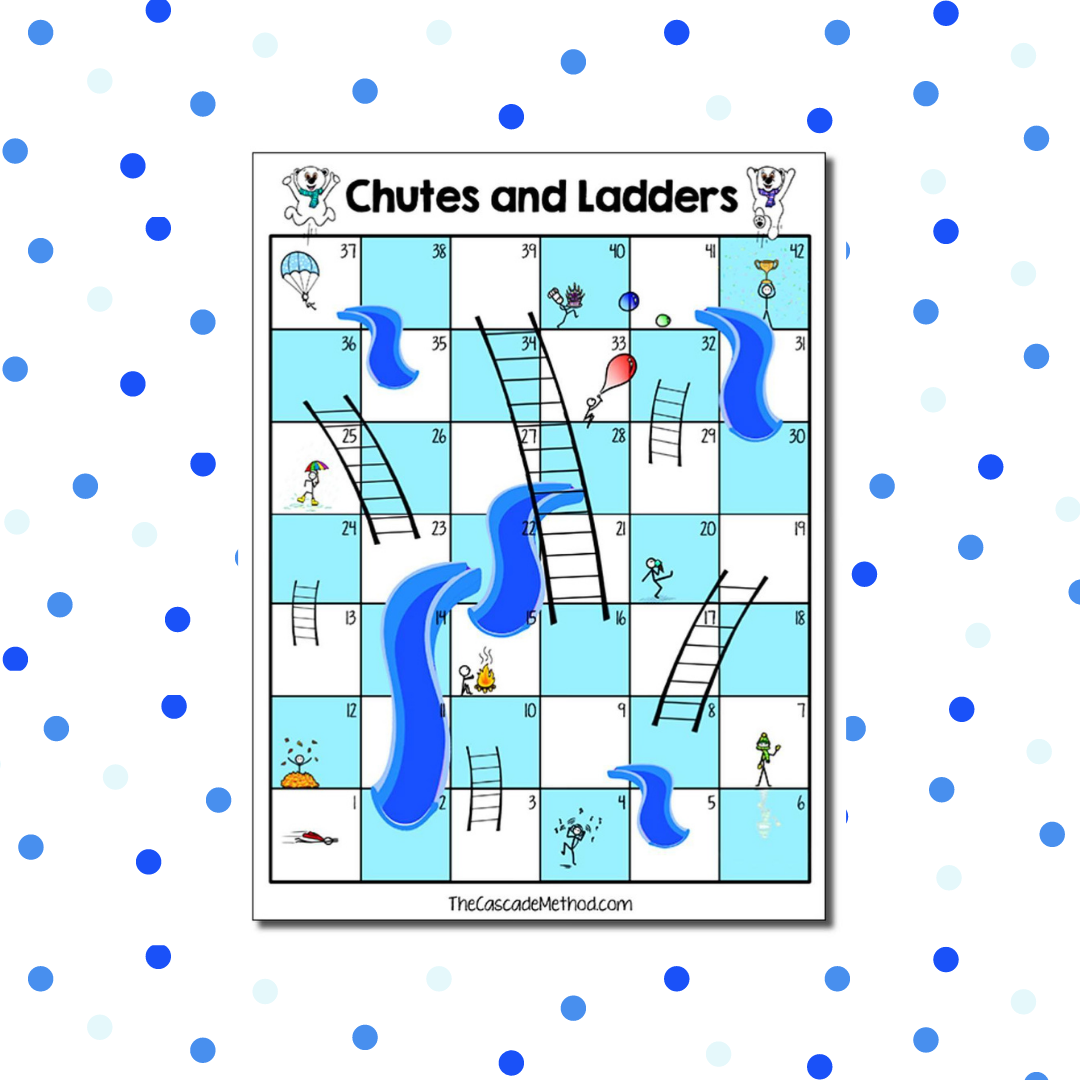
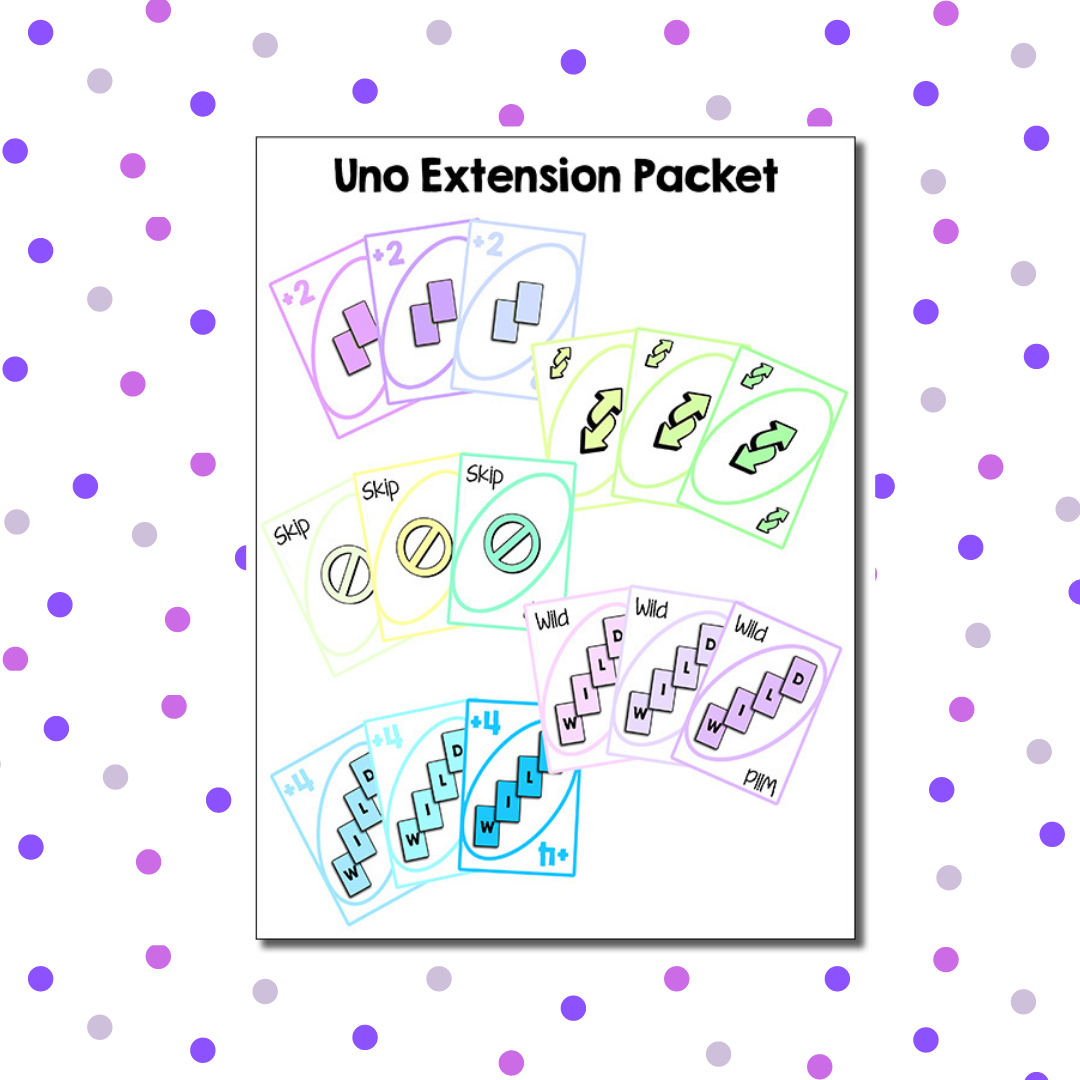
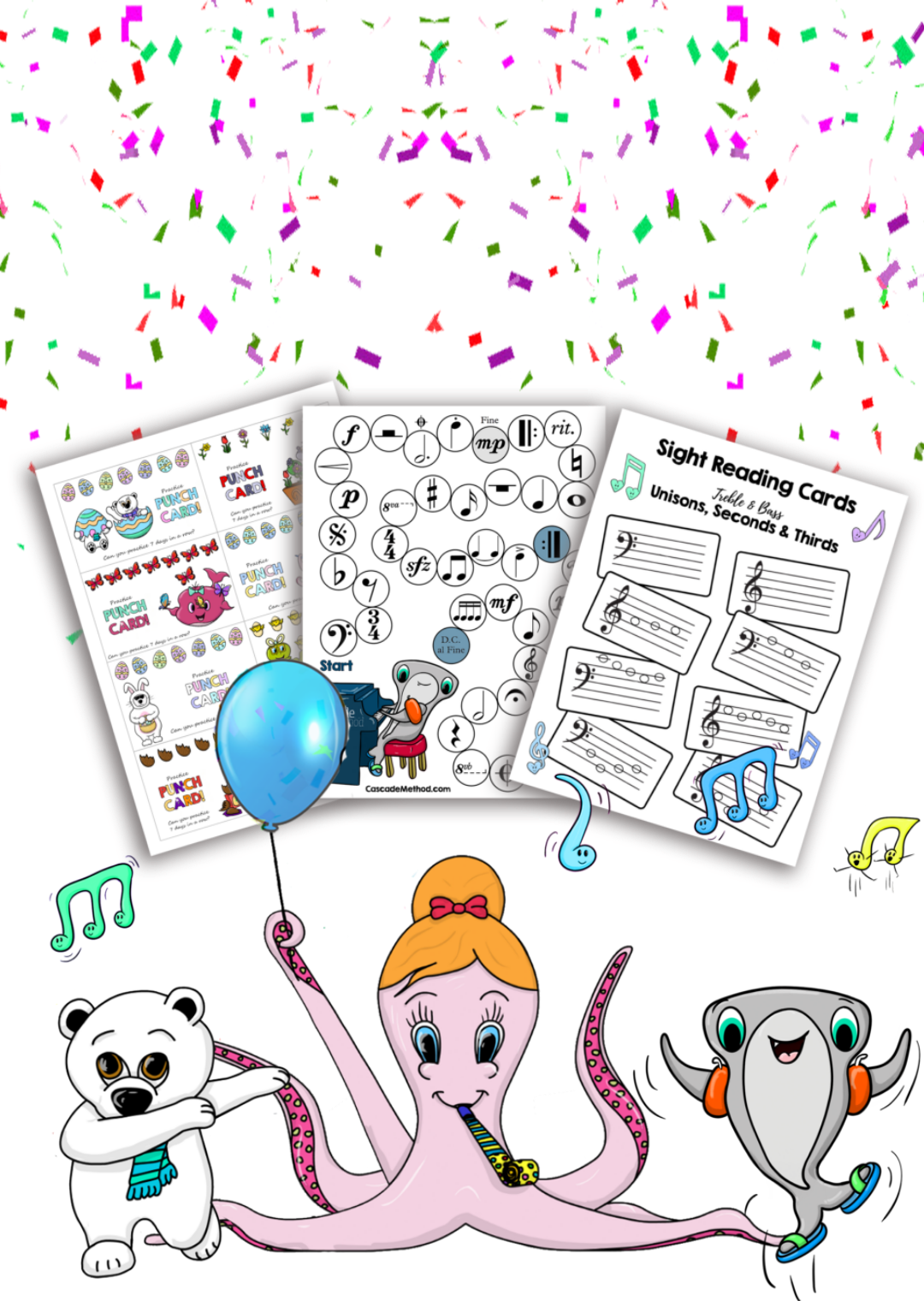
Thank you for your tips. I really like the 5 ways to use interval flashcards. I never thought of using them this way. What a great way to reinforce interval learning.
Thank you so much Anna!!